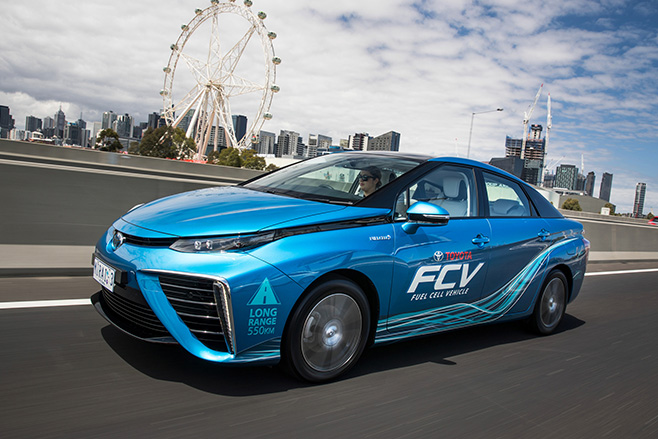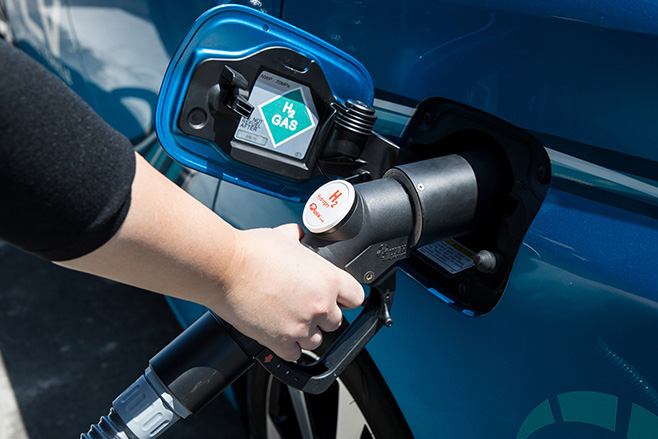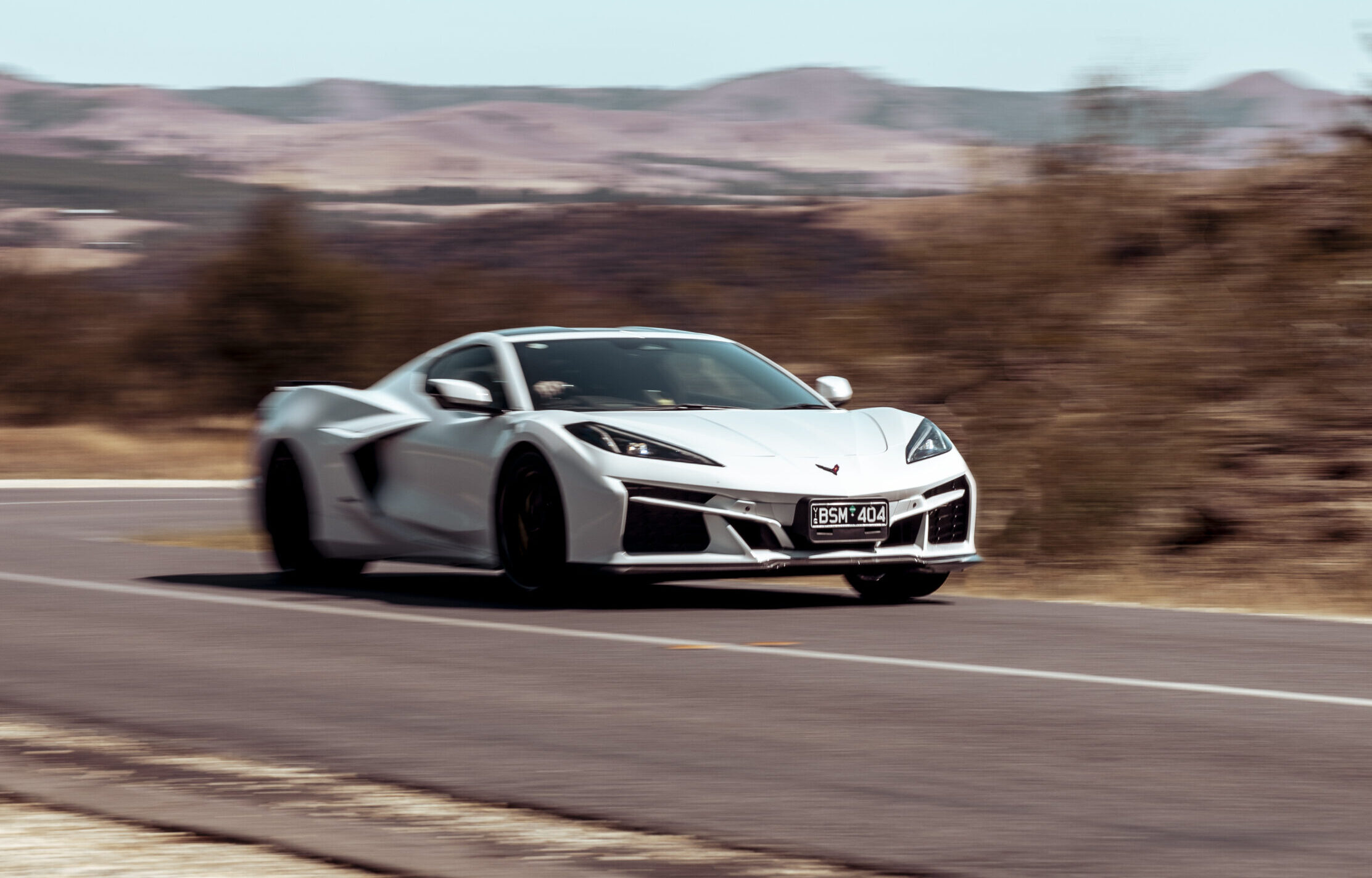Reviews

Gallery 1
TOYOTA has brought three of its forward-looking Mirai sedans to Australia to get government and buyers thinking about alternative fuels. We had a brief drive of one of them in Sydney.
- Mirai means “future” in Japanese. It is Toyota’s play at leading the push towards hydrogen-fuelled cars, much the way the Toyota Prius played an important role in the uptake of hybrid cars 20 years ago.
- The Mirai is an electric car that contains its own miniature on-board power station. However, unlike hybrid cars there is no regular engine. The power is generated by a hydrogen fuel cell, which combines pure hydrogen and electricity to perform a chemical reaction to create electricity and water.

1
- The Mirai has 113kW of power and 335Nm of torque. That gives it similar performance to a Toyota Corolla.
- There are no plans to sell the Mirai in Australia but at today’s exchange rate it would cost upwards of $80,000. The expensive part is the hydrogen fuel cell and the specially designed hydrogen tanks.
- The Mirai takes between three and five minutes to refuel. Refuelling it is similar to how you would fill an LPG car; plug in the nozzle and pull the trigger to start the flow of hydrogen.
- The Mirai has two hydrogen tanks, one under the rear seat and one between the rear seat back and the boot.

1
- At today’s prices it’s estimated the Mirai would cost about $60 to refuel its two tanks that together store 5kg of hydrogen.
- The Mirai is Toyota’s first mass produced hydrogen fuel cell car but it’s not the first mass produced car of its type; that honour goes to the Hyundai ix35. The ix35 fuel cell was only sold overseas, including in Europe. In Paris there is a fleet of them operating as taxis.
- It may be Toyota’s most technically advanced eco car, but the Mirai is largely assembled by hand rather than robots.
- The only hydrogen refuelling station for cars in Australia is at Hyundai’s head office in Sydney. However, Toyota has created a portable refuelling station on the back of a Hino semi-trailer, which also includes a sizeable diesel generator.

1
- The Mirai can be used to power external items, including camping gear, light, even a house. It has a power outlet in the boot that can be used to power other electrical items.
- Despite a focus on weight and fuel efficiency the Mirai’s coefficient of drag (which impacts how easily it slips through the air) is 0.29. That’s well below that of some electric cars; the Tesla Model S, for example, has a drag coefficient of just 0.24 (a lower figure represents better aerodynamic efficiency).
- The chemical reaction in the Mirai’s fuel cell creates about 60 millilitres of water for every kilometre it travels.



